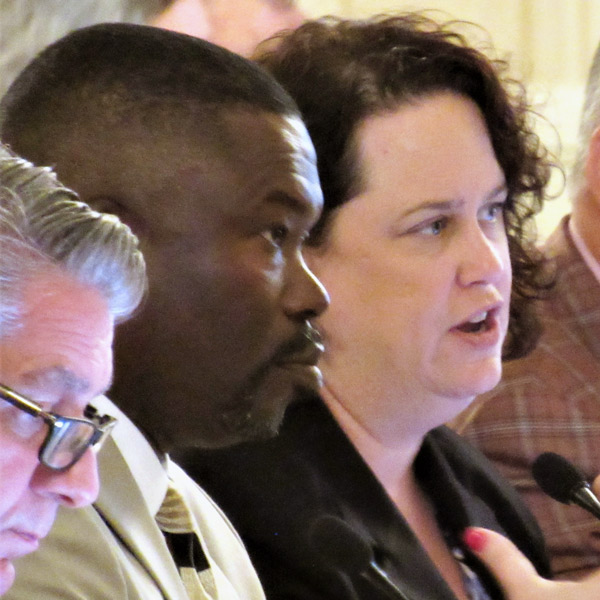By Rich Heidorn Jr.
FERC and the Pipeline and Hazardous Materials Safety Administration on Thursday celebrated their agreement to coordinate the siting and safety reviews of LNG export facilities, saying their Aug. 31 memorandum of understanding will speed the process and make it easier for applicants.
FERC has authority under the Natural Gas Act for authorizing LNG terminals while the Department of Transportation’s PHMSA is responsible for establishing minimal safety standards under the Pipeline Safety Act of 1979.
In the past, FERC staff made preliminary determinations on whether a proposed LNG project could comply with DOT standards, FERC General Counsel James Danly said during a briefing at Thursday’s open commission meeting. But he said the process became problematic with the growing number of applications for LNG export terminals, which are more complex than import facilities.
“This required an extremely iterative process with multiple requests for information from the applicants and back and forth with PHMSA. The MOU that we’ve just signed is going to end that duplicative and iterative process, and now … the experts on this subject — PHMSA — are going to be the ones who make that preliminary determination,” Danly said.
The agreement should allow FERC to accelerate its review on a dozen pending applications, Danly said, “potentially allowing FERC to act by early 2020 on projects capable of exporting over 8 Tcf per year.”
“The numbers involved in the LNG industry are astounding,” said PHMSA Administrator Howard Elliott, who also appeared at the meeting. “A single export facility can deliver an economic impact of $10 billion or more per year, and strong demand from the Asia-Pacific region looks to likely drive those numbers higher over time.”
Commissioner Neil Chatterjee praised the agreement but said FERC should do more, suggesting the commission consider adding a regional office in Houston and boost salaries to make them competitive with industry “to improve retention and recruiting of top-tier engineers and attorneys.”
The U.S., which last year became a net exporter of natural gas, is shipping gas to more than 25 countries, largely through its two operating LNG export terminals, Cheniere Energy’s Sabine Pass in Louisiana and Dominion Energy’s Cove Point in Maryland. The Department of Energy is considering about 25 applications for LNG exports to countries lacking free-trade agreements with the U.S.
“If the U.S. can ensure that adequate LNG export infrastructure is in place to meet that demand, it could mean thousands of additional jobs across the U.S.,” Chatterjee said. “But if we miss the window of opportunity because of bottlenecks in FERC’s LNG export facility application review process or because FERC lacks the resources to complete its review process in a timely fashion, those foreign trading partners will be looking elsewhere for their natural gas.”
FERC had announced its plan to reach an agreement with PHMSA in July. (See FERC Teaming up with PHMSA on LNG Applications.)
Although there is a consensus that exporting too much domestic natural gas could expose U.S. consumers, industrial users and electric generators to much higher world prices, there is no agreement on what that tipping point is, or how soon the U.S. could get there. (See Enviros, Industrials Challenge DOE Study on LNG Exports.)





